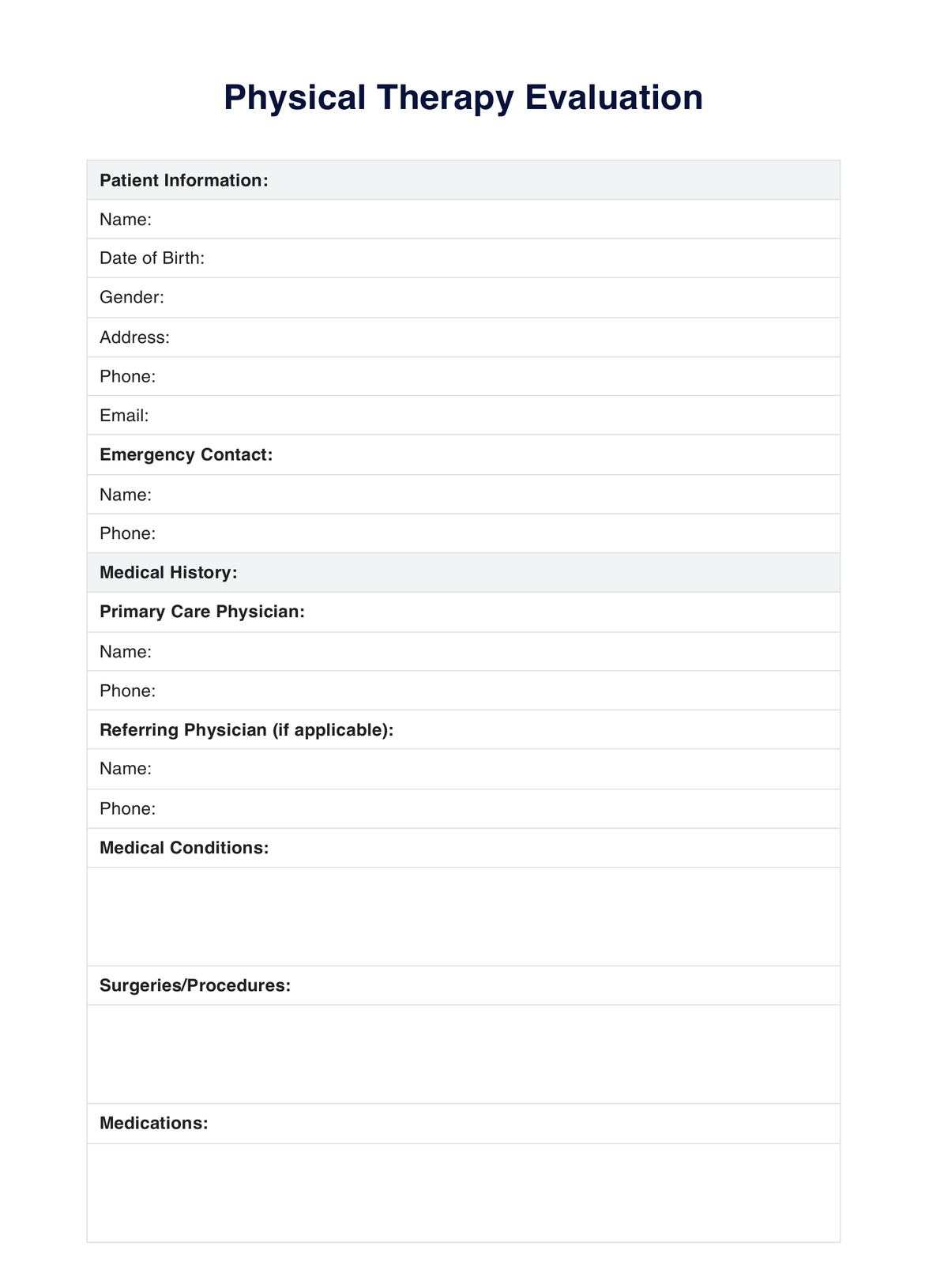An examination is a focused assessment of specific body regions or functions, often used for diagnosis. In contrast, an evaluation is a broader, comprehensive process that assesses a patient's overall health, including medical history and functional status, guiding treatment planning.

Physical Therapy Evaluation Template
Get a free Physical Therapy Evaluation Template. Download Carepatron's PDF to streamline your assessment process with examples.
Physical Therapy Evaluation Template Template
Commonly asked questions
To prepare for a physical therapy evaluation, bring relevant medical records, a list of medications, and comfortable clothing. Be ready to discuss your medical history, symptoms, and any specific goals or concerns you have regarding your physical health.
The initial evaluation in physical therapy is the first comprehensive assessment conducted by a physical therapist to gather information about a patient's condition, including medical history, current symptoms, and functional limitations. This sets the foundation for a personalized treatment plan.
EHR and practice management software
Get started for free
*No credit card required
Free
$0/usd
Unlimited clients
Telehealth
1GB of storage
Client portal text
Automated billing and online payments











